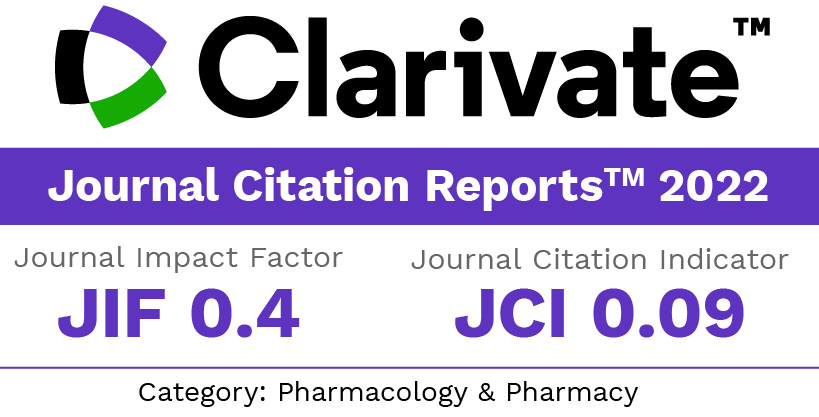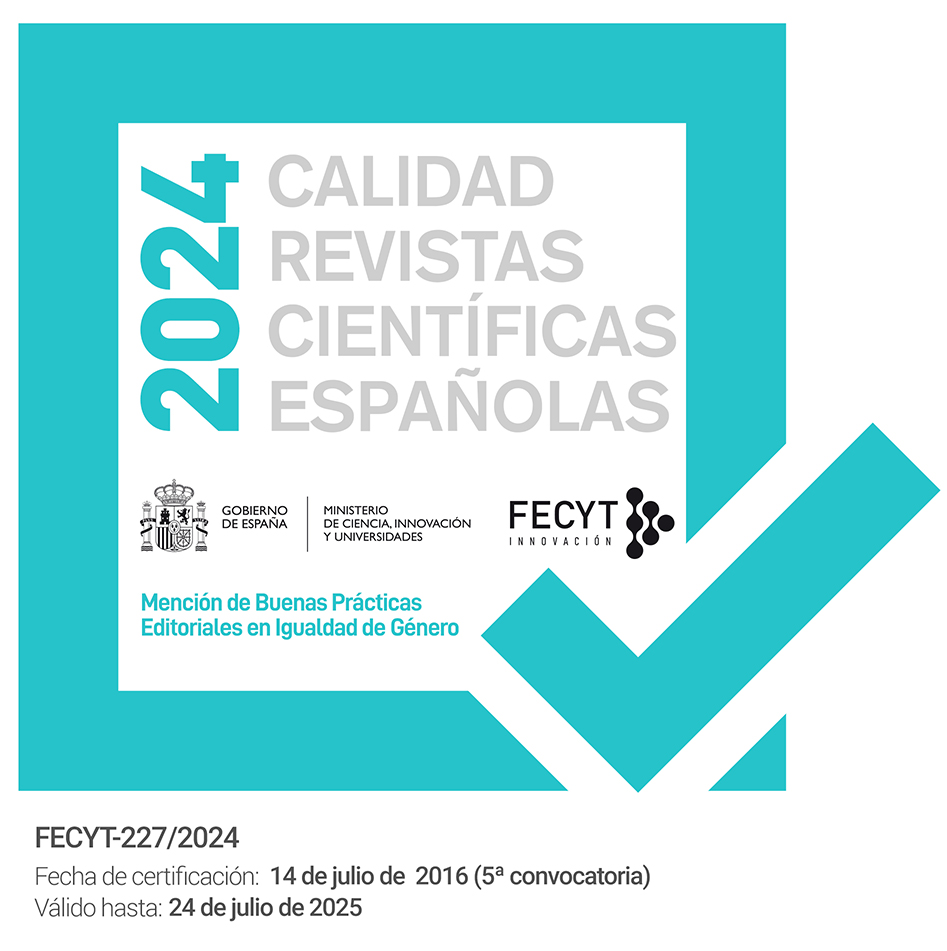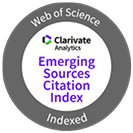Formulación y Evaluación de Comprimidos de Liberación Prolongada de Fumarato de Quetiapina Utilizando Metolose 15000SR y HPMC K15CR
DOI:
https://doi.org/10.30827/ars.v66i4.33615Palabras clave:
Fumarato de quetiapina, Metolosa 15000SR, Hidroxipropilmetilcelulosa K15CR, Comprimidos matriciales de liberación prolongadaResumen
Introducción: El fumarato de quetiapina (QF) es un antipsicótico de segunda generación utilizado para tratar la esquizofrenia y la depresión bipolar. Los comprimidos de liberación prolongada (ER) ayudan a mejorar la adherencia del paciente y a reducir los efectos secundarios al ralentizar la absorción del medicamento.
Método: En este estudio, se prepararon comprimidos de liberación prolongada de QF (QF-ER) utilizando el método de granulación húmeda con dos polímeros, Metolose 15000 SR e Hidroxipropilmetilcelulosa (HPMC) K15CR, en diferentes cantidades. Para comprobar la compatibilidad, el QF se mezcló con otros ingredientes y se almacenó a temperatura ambiente durante 15 días. No se observaron cambios significativos en el color ni en el olor, y el análisis espectral infrarrojo confirmó que el QF era compatible con los polímeros y otros excipientes, sin interacciones. Los gránulos preparados mostraron una fluidez de buena a excelente, lo que garantizó una compresión uniforme de los comprimidos. Los comprimidos terminados se evaluaron en cuanto a peso, dureza, grosor, friabilidad, contenido de fármaco, liberación del fármaco y cinética de liberación.
Resultados: Todas las formulaciones presentaron una buena apariencia sin defectos, y todos los valores cumplieron con los estándares farmacopeicos. Entre las cinco formulaciones, la F5 mostró el mejor desempeño, liberando el 98,77 % del fármaco en 24 horas, similar a la muestra del mercado (97,21 % en 24 horas). La liberación del fármaco de la formulación F5 siguió el modelo de Hixson-Crowell (R² = 0,9997), lo que indica que la liberación fue controlada tanto por la erosión de la tableta como por la difusión. El exponente de liberación (n = 0,6123) sugiere que el mecanismo de liberación del fármaco fue una combinación de hinchamiento y difusión.
Conclusiones: La F5 fue identificada como la mejor formulación, ya que cumplió con todos los requisitos farmacopeicos, presentó excelentes propiedades físicas y ofreció una liberación prolongada y bien controlada del fármaco durante 24 horas, lo que la convierte en una fuerte alternativa al producto del mercado.
Descargas
Citas
Möller HJ, Johnson S, Mateva T, Brecher M, Svensson O, Miller F, Meulien D. Evaluation of the feasibility of switching from immediate release quetiapine to extended release quetiapine fumarate in stable outpatients with schizophrenia: International Clinical Psychopharmacology. 2008; 23(2): 95-105. http://doi:10.1097/YIC.0b013e3282f2d42c
Mitali LS. A study of suicidal ideas and behaviour among patients with schizophrenia. Int J Life Sci Biotechnol Pharma Res. 2024; 13(1): 112-17.
Dongxia L, Li M and Yingying F. Can neurocognition, brain neurotrophic factor, triglyceride, total cholesterol predict suicidal ideation in first-episode Han Chinese patients with schizophrenia? Brain and Behavior 2024;14(5): e3499. http://doi:10.1002/brb3.3499
Lee H, Peng PH, Chiu NM, Huang YC, Lin PY, Hung CF, Lee Y, Wang LJ. The interrelationship of benefit finding, stigma, and suicide risk among patients with schizophrenia and their caregivers: A six-month follow-up study. In Healthcare 2024; 12(21): 2176. http://doi:10.3390/healthcare12212176
Zhu Q, Zhang XY. Correlation analysis and gender differences of cognitive function based on mini-mental state examination (MMSE) and suicidal tendency in patients with schizophrenia. BMC Psychiatry. 2024; 24(1): 8. http://doi:10.1186/s12888-023-05462-9
Sher L, Kahn RS. Suicide in Schizophrenia: An educational overview. Medicina. 2019; 55(7): 361. http://doi:10.3390/medicina55070361
Akhlaq M, Maryam F, Elaissari A, Ullah H, Adeel M, Hussain A, Ramzan M, Ullah O, Zeeshan Danish, M, Iftikhar, S, Aziz N. Pharmacokinetic evaluation of Quetiapine Fumarate controlled release hybrid hydrogel: a healthier treatment of schizophrenia. Drug Delivery. 2018; 25(1): 916-27. http://doi:10.1080/10717544.2018.1458922
Garbacz G, Kandzi A, Koziolek M, Mazgalski J, Weitschies W. Release characteristics of Quetiapine Fumarate extended release tablets under biorelevant stress test conditions. AAPS PharmSciTech. 2014; 15(1): 230-36. http://doi:10.1208/s12249-013-0050-2
Hamsa A, Karumandampalayam Shanmugaramasamy K, Kariyarambath P, Kathirvel S. Quetiapine fumarate: A review of analytical methods. Journal of Chromatographic Science, 2023; 61(9): 892-906. http://doi:10.1093/chromsci/bmac100
Ozcelik E, Mesut B, Aksu B, Ozsoy Y. Quetiapine Fumarate extended-release tablet formulation design using artificial neural networks. Turk J Pharm Sci. 2017; 14(3): 213-21. http://doi:10.4274/tjps.97720
Wheless JW, Phelps SJ. A clinician’s guide to oral extended-release drug delivery systems in epilepsy. J Pediatr Pharmacol Ther. 2018; 23(4): 277-92. http://doi:10.5863/1551-6776-23.4.277
Bhowmik D, Bhanot R, Kumar KPS. Extended release drug delivery-an effective way of novel drug delivery system. Res J Pharm Dosage Forms Technol. 2018; 10(4): 233-44. http://doi:10.5958/0975-4377.2018.00035.6
Gavan A, Porfire A, Marina C, Tomuta I. Formulation and pharmaceutical development of quetiapine fumarate sustained release matrix tablets using a QbD approach. Acta Pharmaceutica. 2017; 67(1): 53-70. http://doi:10.1515/acph-2017-0009
Metolose SR® HPMC for sustained release application - Shin Etsu SE Tylose GmbH & Co. KG. Accessed March 11, 2025. https://www.setylose.com/en/products/healthcare/metolose-sr
Pan P, Svirskis D, Waterhouse Gin, Wu Z. Hydroxypropyl methylcellulose bioadhesive hydrogels for topical application and sustained drug release: The effect of polyvinylpyrrolidone on the physicomechanical properties of hydrogel. Pharmaceutics. 2023; 15(9): 2360. http://doi:10.3390/pharmaceutics15092360
Soni R, Jain AK, Jain UK. Formulation and evaluation of transdermal patch of antipsychotic drug to overcome nervous emotional disease. Asian J. Pharm. Res Dev. 2025; 13(1): 15-20. http://doi:10.22270/ajprd.v13i1.1497
Jain S, Shah RP. Drug-excipient compatibility study through a novel vial-in-vial experimental setup: A benchmark study. AAPS PharmSciTech. 2023; 24(5): 117. http://doi:10.1208/s12249-023-02573-0
Raja Sekharan T, Palanichamy S, Shanmuganathan S, Tamilvanan S, Thanga Thirupath A. Formulation and evaluation of Theophylline controlled release matrix tablets using Guar gum. ARS Pharmaceutica. 2009; 50(4): 205-14.
Santhanamariammal C, Raja Sekharan T, Lydia B, Ramkumar P. Formulation and evaluation of Prednisolone retention enema as dispersible tablet and vehicle for the treatment of ulcerative colitis. Letters in Applied NanoBioScience. 2019; 8(1): 545-52. https://doi.org/10.33263/LIANBS81.545552
Parasakthi N, Palanichamy T, Raja Sekharan T, Solairaj P. Formulation and evaluation of Metformin hydrochloride sustained release tablets. Int J Univers Pharm Bio Sci. 2015; 4(1): 276-85.
Raja Sekharan T, Palanichamy S, Shanmuganathan S, Karthikeyan A, Senthilkumar S, Thanga Thirupathi A. Formulation and evaluation of Theophylline controlled release matrix tablets using Xanthan gum. Der Pharmacia Lettre. 2009; 1(2): 93-101.
Sreekanth SK, Palanichamy S, Raja Sekharan T, Thanga Thirupathi A. Formulation and evaluation studies of floating matrix tablets of Nifedipine. Int J Pharma Bio Sci. 2010; 1(2): 1-8.
Raja Sekharan T, Sudha P, Palanichamy S, Thanga Thirupathi A. Formulation and evaluation of acid stabilized lansoprazole oral tablet by forming inclusion complex with the combination of cyclodextrin and tromethamine. Journal of Pharmacy Research. 2010; 3(12): 3018-22.
Ellakwa TE, Abu-Khadra AS, Ellakwa DES. Influence of physico-chemical properties of hydroxypropyl methylcellulose on quetiapine fumarate release from sustained release matrix tablets. BMC Chemistry. 2024; 18(1) :219. http://doi:10.1186/s13065-024-01311-2
Quetiapine Extended-Release Tablets. In United States Pharmacopeial Convention Committee of Revision (Ed), USP-NF Online (2023 ed) United States Pharmacopeial.
Raja Sekharan T, Palanichamy S, Tamilvanan S, Shanmuganathan S, Thanga Thirupathi A. Formulation and evaluation of hydroxypropyl methylcellulose-based controlled release matrix tablets for theophylline. Indian J Pharm Sci. 2011; 73(4): 451.
Descargas
Publicado
Cómo citar
Número
Sección
Licencia
Derechos de autor 2025 Raja Sekharan T

Esta obra está bajo una licencia internacional Creative Commons Atribución-NoComercial-CompartirIgual 4.0.
Los artículos que se publican en esta revista están sujetos a los siguientes términos en relación a los derechos patrimoniales o de explotación:
- Los autores/as conservarán sus derechos de autor y garantizarán a la revista el derecho de primera publicación de su obra, la cual se distribuirá con una licencia Creative Commons BY-NC-SA 4.0 que permite a terceros reutilizar la obra siempre que se indique su autor, se cite la fuente original y no se haga un uso comercial de la misma.
- Los autores/as podrán adoptar otros acuerdos de licencia no exclusiva de distribución de la versión de la obra publicada (p. ej.: depositarla en un archivo telemático institucional o publicarla en un volumen monográfico) siempre que se indique la fuente original de su publicación.
- Se permite y recomienda a los autores/as difundir su obra a través de Internet (p. ej.: en repositorios institucionales o en su página web) antes y durante el proceso de envío, lo cual puede producir intercambios interesantes y aumentar las citas de la obra publicada. (Véase El efecto del acceso abierto).
























